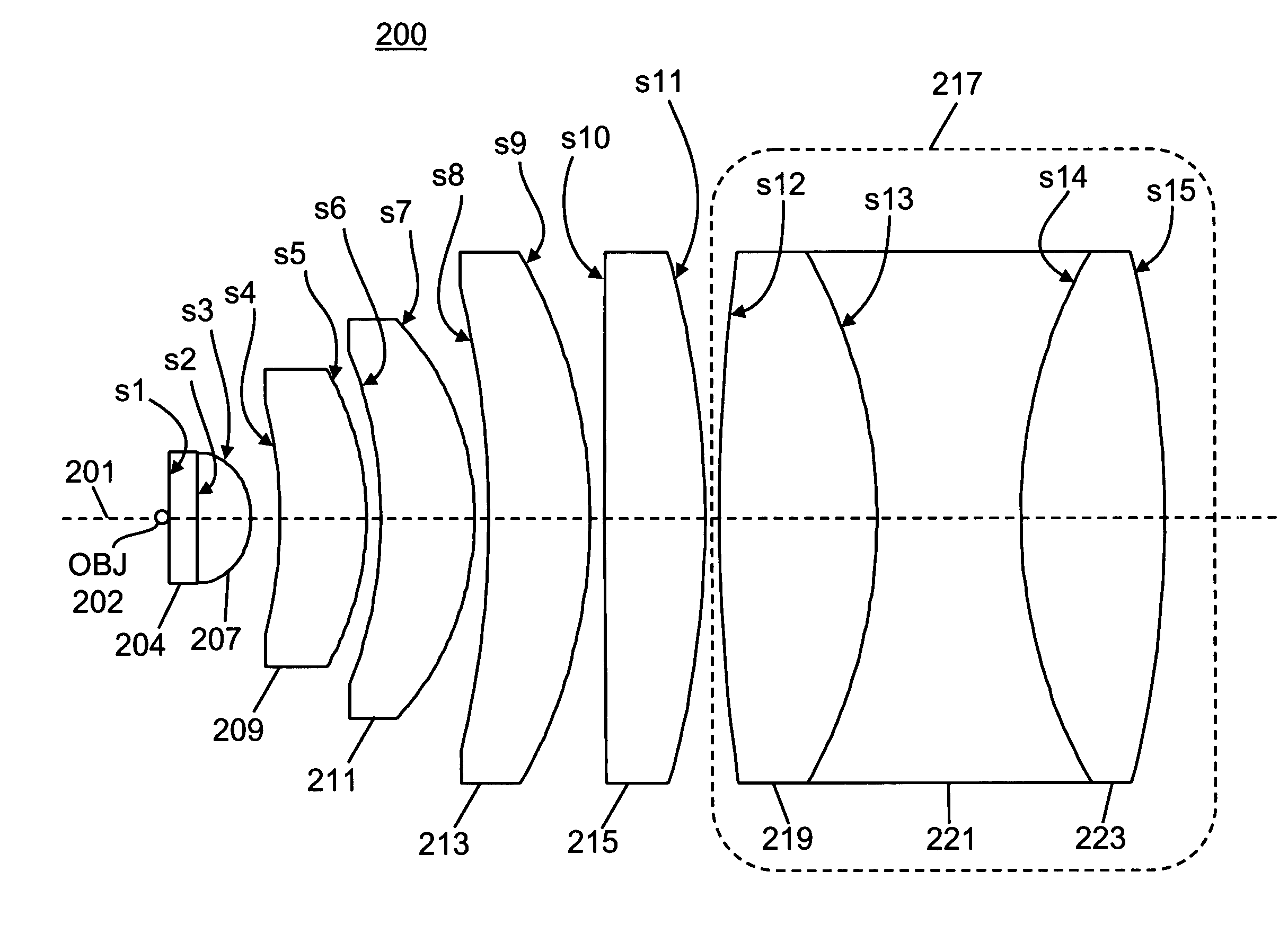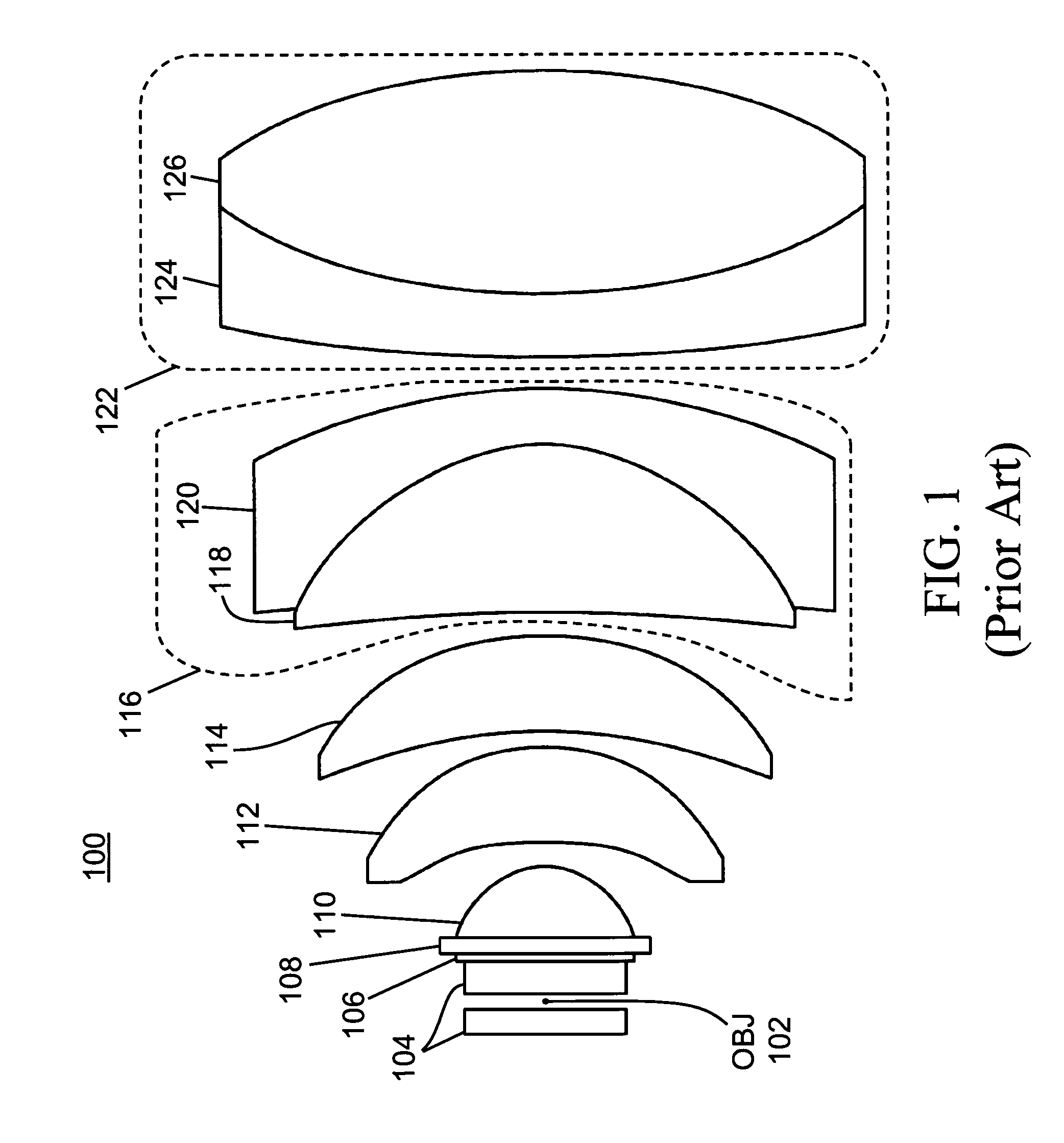System and method for a composite lens for a flow cytometer
a flow cytometer and composite lens technology, applied in the field of optical lens systems, can solve the problems of less image quality and not the same amount of image quality required previously, and achieve the effects of reducing the overall curvature value, and reducing the size of the lens
- Summary
- Abstract
- Description
- Claims
- Application Information
AI Technical Summary
Benefits of technology
Problems solved by technology
Method used
Image
Examples
embodiment no.1
Preferred Embodiment No. 1
[0018]A first preferred embodiment of a cytometry lens system 200 in accordance with the present invention is shown in FIG. 2. The reference marks beginning with the letter “s” in FIG. 2 correspond to the surfaces defined in Table 1. Table 1 contains detailed lens data relating to the preferred embodiment 200. The values of radius of curvature, thickness and aperture provided in Table 1 are in units of millimeters. Entries in the column labeled “Thickness” refer to the distance measured from where the surface in question intersects the axial line 201 (FIG. 2) to where the subsequent surface listed in Table 1 (the surface to the right of the one in question in FIG. 2) intersects this same line. Thus, if the surface in question is on a left side of a lens element (according to the orientation shown in FIG. 2), then the “thickness” entry refers to the thickness of the lens element measured along the axial line 201. If the surface in question is on the right si...
embodiment no.2
Preferred Embodiment No. 2
[0027]A second preferred embodiment of a cytometry lens system 300 in accordance with the present invention is shown in FIG. 3. The reference marks beginning with the letter “s” in FIG. 3 correspond to the surfaces defined in Table 2. Other parameters listed in Table 2 are defined similarly to the respective parameters in Table 1, as already discussed above.
[0028]
TABLE 2Radius ofThick-Index ofAbbeSurfaceCurvaturenessApertureMaterialRefractionNumberOBJ—0.1250.141.33342.530s16—1.0002.00Crown1.45850.510Glasss17—1.9001.90Crown1.45850.510Glasss18−2.0001.0681.90Air1.000—s19−10.0003.0003.50Crown1.51647.830Glasss20−7.5000.5004.50Air1.000—s21−12.0003.5005.00Crown1.51647.830Glasss22−9.1100.5006.50Air1.000—s23−34.5004.0007.00Crown1.51647.830Glasss24−10.9000.5007.50Air1.000—s2523.0005.0008.00Crown1.51647.830Glasss26−23.0003.0008.00Flint1.68922.480Glasss27−26.4001.5007.50Air1.000—s28−14.3603.0008.00Flint1.68940.221Glasss2914.3605.5006.75Crown1.51922.480Glasss30−16.58483...
PUM
 Login to View More
Login to View More Abstract
Description
Claims
Application Information
 Login to View More
Login to View More - R&D
- Intellectual Property
- Life Sciences
- Materials
- Tech Scout
- Unparalleled Data Quality
- Higher Quality Content
- 60% Fewer Hallucinations
Browse by: Latest US Patents, China's latest patents, Technical Efficacy Thesaurus, Application Domain, Technology Topic, Popular Technical Reports.
© 2025 PatSnap. All rights reserved.Legal|Privacy policy|Modern Slavery Act Transparency Statement|Sitemap|About US| Contact US: help@patsnap.com



